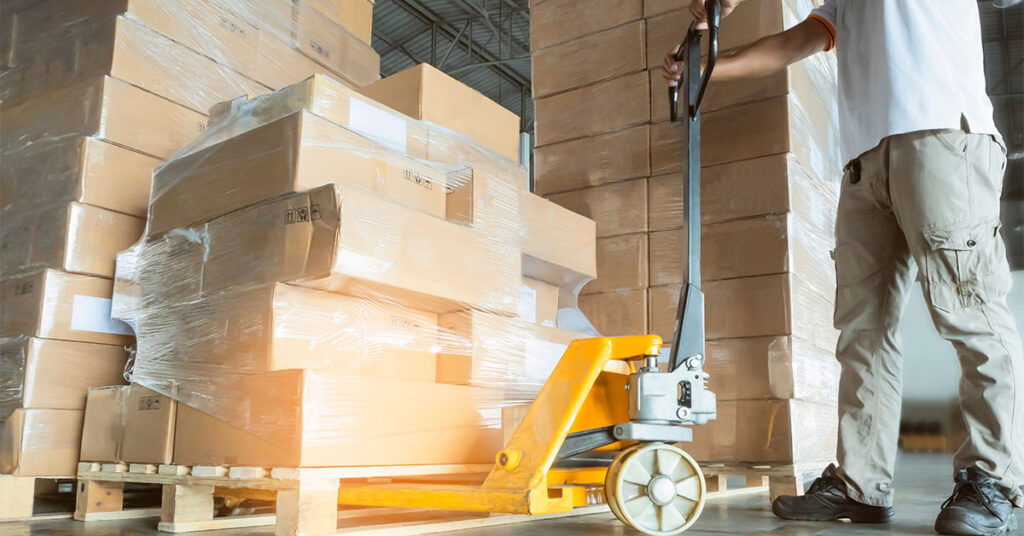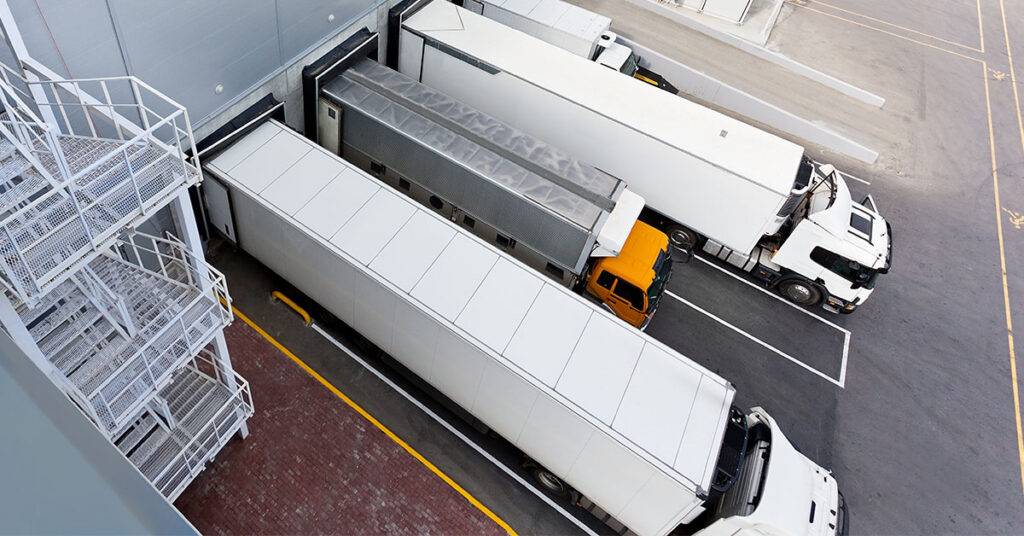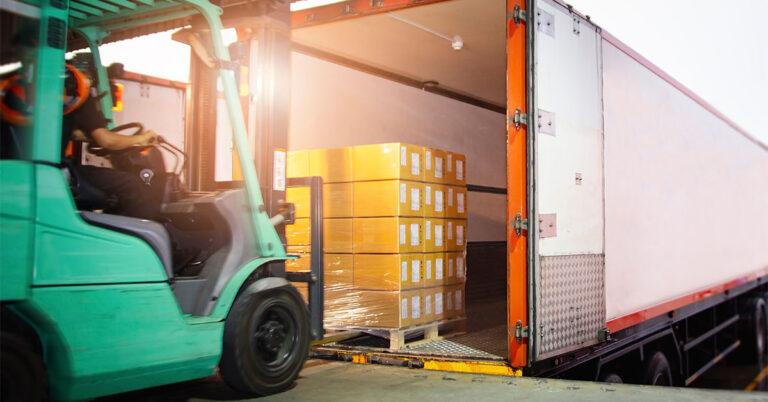- What is LTL Shipping?
- How does LTL Shipping work?
- Advantages of LTL Shipping
- Disadvantages of LTL Shipping
- To LTL Ship or not to LTL Ship
Less-than-truckload (LTL) shipping has become a lot more popular in recent years. This growth is largely due to the rise of e-commerce, increasing the demand for smaller, more frequent shipments. New restrictions from major parcel service carriers have also led shippers to bundle items together and ship a pallet via LTL rather than individual parcels.
So, what are the pros and cons of LTL shipping for your business?
What is LTL Shipping?
LTL shipping is used for the transportation of small freight or when freight doesn’t require the use of an entire trailer.
This shipping method can be used when freight weighs between 70 and 7,000kg.
LTL providers combine the loads and shipping requirements of several different companies on their trucks, using a hub-and-spoke system to get goods to their destinations.

A ‘hub and spoke’ distribution model is used to deliver inventory to multiple fulfilment centres from a large central depot (or hub).
How does LTL Shipping work?
This shipping method requires careful coordination and management, but it can provide significant savings and flexibility compared to shipping a full truckload (FTL).
The key stages are:
- Collection: The carrier gathers smaller shipments from various shippers. These are typically goods that don’t fill an entire truck trailer.
- Consolidation: Once collected, shipments are brought to a central hub where they’re sorted and consolidated with other shipments headed in the same direction. This can involve rearranging goods onto different trucks to optimise the delivery routes.
- Transit: Consolidated shipments are then transported to their respective destinations. This may involve multiple hubs and potentially transferring goods between different trucks along the way.
- Deconsolidation (if necessary): In some cases, shipments may be deconsolidated and rearranged at another hub, ensuring that they’re grouped with other shipments going to nearby locations.
- Final Delivery: Shipments are finally delivered to the consignee at the destination. In LTL shipping, the final leg of the journey may include several drop-off points for different consignees on the same route.
Throughout the entire process, LTL carriers usually provide tracking and documentation services. Shippers can track their goods in real-time, and the necessary paperwork – like a Bill of Lading, for example – is carefully managed to ensure compliance with legal and regulatory requirements.
When it comes to billing, cost is typically determined by the weight of the shipment, the distance it needs to travel, and any special handling or services required.

Advantages of LTL Shipping
Cost Savings
Low cost is what makes LTL shipping attractive. When booking an LTL shipment, you only pay for the portion of the trailer used. The rest of the space is occupied and paid for by other shippers.
Think of it as sharing a taxi ride; everyone contributes to the cost according to their share of the journey, making it more economical for all the trailer’s occupants.
Flexibility
LTL shipping offers flexibility in terms of service options to better meet each shipper’s unique needs. These specialised services include:
- Inside Pickup and Delivery. Collection and delivery of goods directly within a building, catering to specific location requirements.
- Special Handling. Providing additional care for special items such as fragile or hazardous goods.
- Liftgates. Mechanical platforms on trucks that aid in loading and unloading, particularly useful when a loading dock is unavailable.
- Refrigeration. Temperature-controlled shipping for perishable or heat-sensitive items.
For example, a small food producer transporting artisanal cheeses can utilise LTL shipping’s specialised services. They can take advantage of refrigeration to maintain quality, use liftgate service for locations without loading docks, and request inside pickup and delivery. All these services align precisely with their unique requirements for a small, temperature-sensitive shipment.
Reduced Environmental Impact
The LTL shipping process results in fewer trucks at full load on the road, rather than more trucks carrying less than their capacity. It’s like carpooling, but for goods. Fewer trucks on the road means reduced emissions and a smaller carbon footprint for your company.
Reduced Warehouse Costs
LTL shipping allows businesses to send smaller shipments when they’re ready. This can lead to a quicker turnover of stored products, meaning that items don’t need to be stored in a warehouse for extended periods while waiting for enough goods to fill a full truckload.

Disadvantages of LTL Shipping
Longer Transit Times
One disadvantage of LTL shipping is longer delivery times. Because you’re dependent on the pickup and delivery times of those sharing the load, it can potentially take longer for your freight to reach its destination. This is especially true of cross-country shipments that have to make stops along the way.
Risk of Damage or Loss
LTL shipments are more susceptible than FTL to damage, loss, and shortages. These are known in the transportation industry as Over Short & Damage (OS&D). The increased handling and transferring of goods increase the possibility of damage.
Less Secure
LTL shipping can be less secure than FTL shipping. LTL makes many stops along the route which increases the odds of others having access to your freight or losing your entire shipment. With FTL, your freight is loaded on the trailer, secured, and the trailer can be sealed and not opened until it reaches its destination.
Is it worth LTL Shipping or not?
Choosing between LTL or FTL Shipping depends on the nature of the goods transported and your flexibility with timing.When LTL Shipping is the best option
LTL shipping becomes a preferred choice for companies handling freight that weighs less than 7,000kg and doesn’t fill an entire trailer.LTL is suitable when:
- Delivery dates are flexible
- Goods can be easily stored on pallets
- Fewer than 12 pallets are involved
- Items are durable
When FTL Shipping is the best option
Full Truckload (FTL) shipping is utilised when there’s enough freight to fill or nearly fill an entire truck, from collection to delivery.
FTL is suitable when:
- There’s no flexibility with deadlines
- The shipment includes more than 12 pallets
- Goods are unusually shaped or oversized
- Items are highly valuable or fragile
While LTL is typically more budget-friendly, you want to analyse each shipment individually to determine whether LTL or FTL is the best option for your business.
Identifying the ideal shipping option
Calculating shipping options and booking freight can be a hassle. With MachShip’s Rate Management & Quoting you can compare rates and delivery times to determine the cheapest carrier, the fastest carrier, or the cheapest ofthe fastest carriers in any given shipping lane.
Our platform includes a route optimisation feature to help drivers know the most efficient path from A to B. It also provides valuable insights and ways to quickly identify potential inefficiencies along the supply chain.
MachShip integrates seamlessly with your existing tech platforms to instantly select the best carriers – including LTL shipment – for any given consignment, allowing you to speed up delivery and reduce costs.

